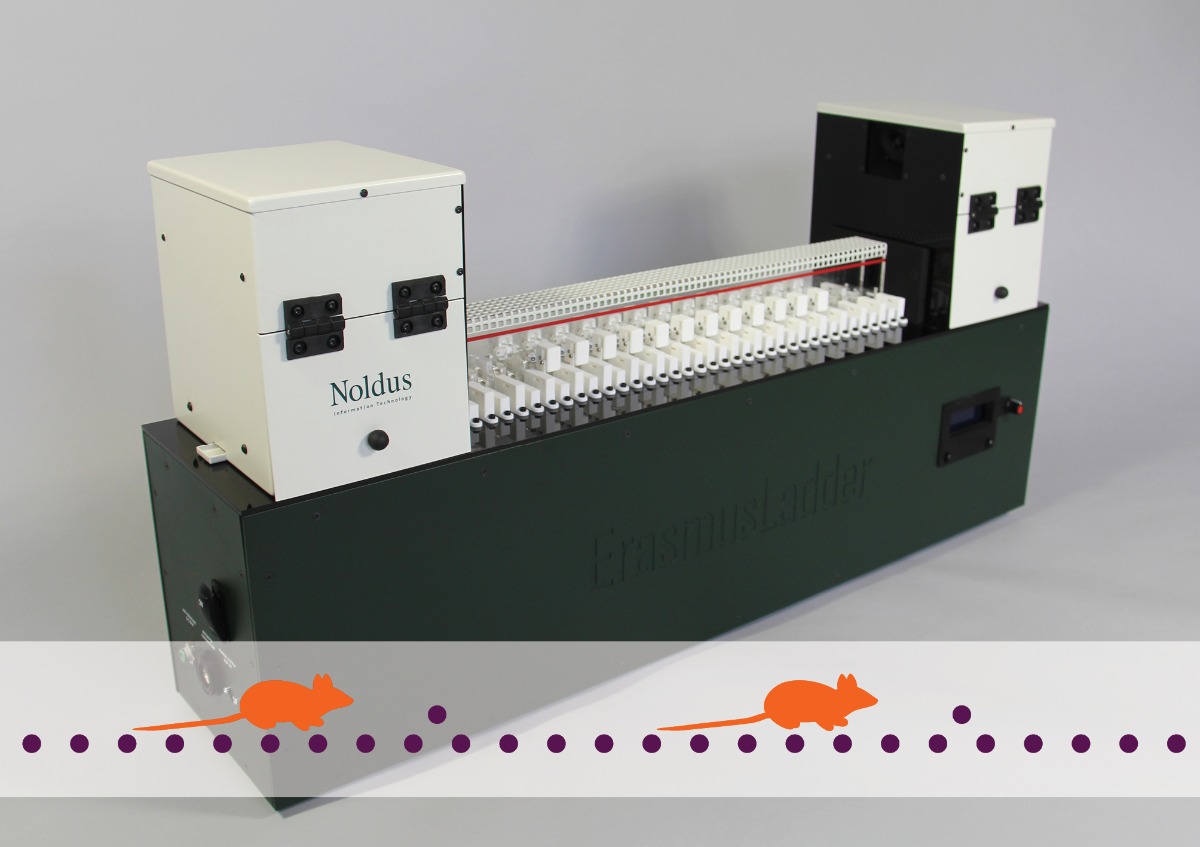ErasmusLadder
Software
Set up the protocol in the software, or use the standard. After the start signal, a full session automatically takes place. Data is sent back to the software for storage and analysis. Typically, an animal undergoes 8 sessions.
Designing your protocol
In the software you can choose to use the standard protocol that is designed by Erasmus MC (Rotterdam, The Netherlands). You can also design your own. A standard protocol includes one session per day, with a total of eight sessions. The first four sessions are training sessions, and the last four include a challenge. Each session consists of 42 trials. Each trial is defined as one run over the ladder.
Training and Challenge sessions
Each trial includes two parts. The first part of the trial is whether the animal leaves the goal box in a timely manner. Light is used as a cue for the animal to leave the box. A pressurized air stream serves as a secondary stimulus, and it also motivates the animal to perform a consistent run over the ladder (the ‘backwind’ is adjusted for distance so it remains constant for the animal). The second part of the trial is the actual run over the ladder to the goal box on the other side. The animal will be in a dark box during a time out, until the next trial starts.
Read more about training and challenge sessions here.
Creating your own protocol
You can design a custom protocol in the software by building a protocol from scratch or adjusting the Erasmus MC or another protocol. You can choose:
- The number of sessions
- The number of trials in a session
- The composition of a trial (for example, set a longer time out period, change the duration of the tone, light, and air cues)
Experiment control
Your experiment starts with your software; here you design and choose your protocols and make your trial lists. When you are ready to start testing the animals, the software sends the protocol out to the ErasmusLadder apparatus. The apparatus will then show which mouse is scheduled for that session, and the protocol will start when the animal is placed in the goal box. When a session is completed, all acquired data is sent back to the software for analysis and storage. Afterward the information for the next animal in the next session is automatically sent to the apparatus, so that you can immediately continue with your experiment and no time is wasted.

Analysis
Analysis is done on the session and group levels, assessing the motor performance, motor learning, and specifically associative (reflexive) motor learning in test mice. Motor performance is measured by counting step durations and missteps during a trial. Motor learning can be assessed by measuring how these parameters change over consecutive trails and sessions. How the stepping pattern of the animal changes in reaction to the unconditioned stimulus (obstacle) and/or conditioned stimulus (tone) in the later sessions tests its associative learning abilities.
- Motor performance: step durations and step types (e.g. missteps)
- Motor learning: parameter changes over consecutive trials
- Associative motor learning: how the animal learns to deal with an obstacle that is paired with a conditioned stimulus (tone)
Analysis variables
- Short step: step from one high rung to the next high rung
- Long step: skipping one high rung
- Jump: skipping two high rungs
- Misstep: a step forward, but the paw is placed on a low rung
- Back step: a step back from one high rung to the previous high rung
- Pre-perturbation step: the step before perturbation
- Post-perturbation step: the step during (over) the perturbation
All steps are presented in milliseconds (ms). All steps except for the pre- and post- perturbed steps are also presented in percentages (the number of times that specific step type was taken compared to all steps made).
The pre- and post-perturbation steps are also measured when no perturbation takes place; thus, the duration of these steps can be compared between non-perturbed and perturbed runs, as it is likely that the mouse will adjust its stepping behavior in response to the tone and/or the perturbation.
In addition, the software also gives feedback on parameters related to the goal box, such as latency to leave the goal box after light and air cues are given, escape attempts during time out, and the completion of trials.
Data storage
All the data from one ErasmusLadder, from all your experiments, is stored in one database. This SQL database is a relational database, meaning that it is impossible to use duplicate names or codes for animal and protocols. Also, once a protocol is used, it cannot accidentally be changed.
 English
English German
German French
French Italian
Italian Spanish
Spanish Chinese
Chinese